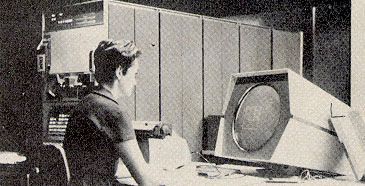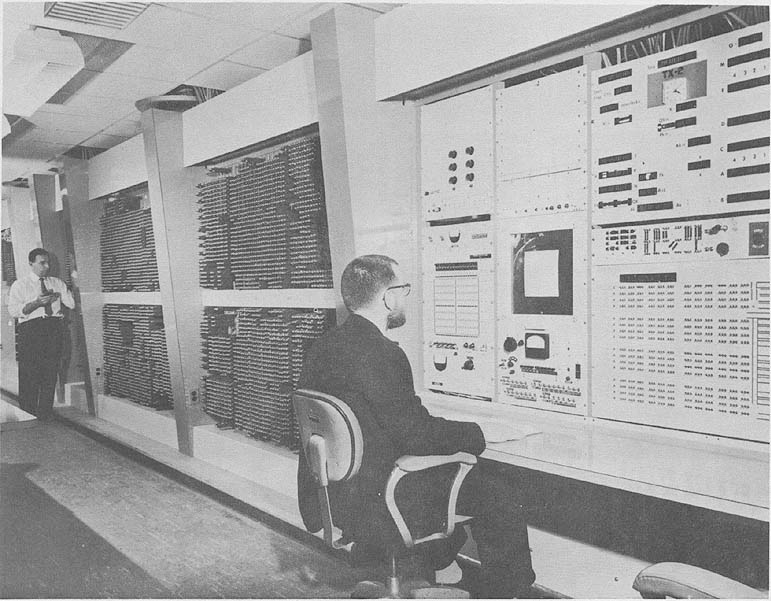Chapter 2: The emergence of graphics technology
2.3 MIT’s Lincoln Labs

Continuing the development of the digital computer, the TX-2 (1959) computer at MIT’s Lincoln Laboratory was key in the evolution of interactive computer graphics. The Air Force paid Lincoln Laboratory to build TX-0, and later TX-2 as demonstrations that transistors, themselves relatively new, could be the basis of major computing systems. (Digital Equipment Company (DEC) formed around the people that built these machines. DEC’s PDP-1 and PDP-6 computers commercialized the TX-0 and TX-2 designs.)

TX-2 was a giant machine by the standards of the day, in part because it had 320 kilobytes of fast memory, about twice the capacity of the biggest commercial machines. It had magnetic tape storage, an on-line typewriter, the first Xerox printer, paper tape for program input, and most important for the graphics industry, a nine inch CRT. The display, a light pen, and a bank of switches were the interface on which the first interactive computer graphics system was based.

The purpose of the TX-2 was to investigate the use of Surface Barrier transistors for digital circuits. Prior to this computers were made with vacuum tubes, and it was thought that transistors would increase the reliability of these computers. Programs were written on paper tape, and fed into the TX-2 by the programmer. In the early sixties, few computers ran “on line.” Instead, most computers ran “batches” of jobs submitted by users to the computer operators who scheduled the jobs to keep the computer fully occupied. Turn around time for each job was usually an hour or more, and often overnight.

Wes Clark, the man who designed the TX-2, integrated a number of man-machine interfaces that were just waiting for the right person to show up to use them in order to make a computer that was “on-line”. His computer, the LINC, is considered the first minicomputer and a forerunner to the personal computer. Originally named the “Linc”, suggesting the project’s origins at the Lincoln Laboratory, it was renamed LINC after the project moved from the Lincoln Laboratory.
When selecting a PhD thesis topic, an MIT student named Ivan Sutherland (Chapter 3) looked at the simple cathode ray tube and light pen on the TX-2’s console and thought one should be able to draw on the computer. Thus was born Sketchpad, and with it, interactive computer graphics.

